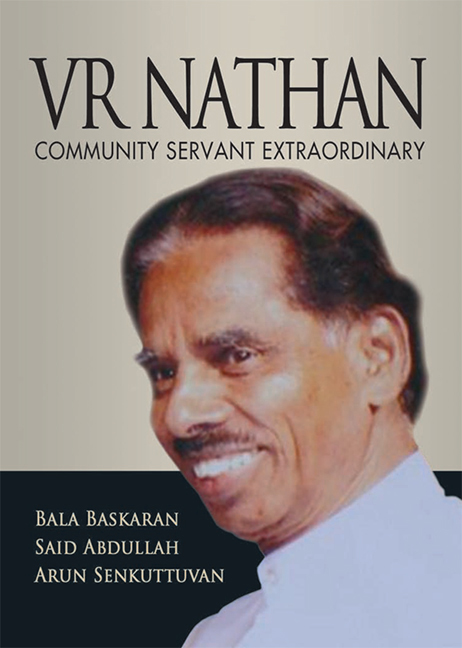Book contents
- Frontmatter
- Contents
- Foreword
- Message
- Preface
- Acknowledgements
- 1 VR's Inter-religious Leadership
- 2 An Immigrant who Made Good
- 3 Introduction to Temple Management Affairs
- 4 Invitation to Help out HEB
- 5 An Era of Change in HEB
- 6 VR's Signal Contribution to HEB's Transformation
- 7 Celebrating Hindu Festivals
- 8 Transforming the Temple Scene
- 9 VR's Views in Public Deliberations of Issues Affecting Indians
- 10 VR's Legacy
- Appendix
- About the Authors
- Plate section
4 - Invitation to Help out HEB
Published online by Cambridge University Press: 21 October 2015
- Frontmatter
- Contents
- Foreword
- Message
- Preface
- Acknowledgements
- 1 VR's Inter-religious Leadership
- 2 An Immigrant who Made Good
- 3 Introduction to Temple Management Affairs
- 4 Invitation to Help out HEB
- 5 An Era of Change in HEB
- 6 VR's Signal Contribution to HEB's Transformation
- 7 Celebrating Hindu Festivals
- 8 Transforming the Temple Scene
- 9 VR's Views in Public Deliberations of Issues Affecting Indians
- 10 VR's Legacy
- Appendix
- About the Authors
- Plate section
Summary
S R Nathan, SR to his friends, had been chairman of the Hindu Advisory Board since 1981. A distinguished civil servant, SR was First Permanent Secretary to the Ministry of Foreign Affairs. He was the highest ranking public official to chair HAB in its history.
HAB, by its charter, is an advisory body, to advise the Minister on Hindu affairs in Singapore. The Hindu Endowments Board is the executive board with the power and funds to administer its endowments – basically four temples and properties belonging to the four temples. The two bodies used to conduct their own separate meetings until the arrival of SR. That was to change. SR, being a leader wanting to get things done, began the practice of presiding over joint meetings of both the boards with the concurrence of P Selvadurai, chairman of HEB, a practice that continues.
Even prior to his appointment to HAB, SR was somewhat familiar with the affairs of Hindu temples in Singapore. He was a practising Hindu. He was close to his brother-in-law and neighbour, N P K Rajamanickam, who apart from being the leading Hindu astrologer in Singapore, was also one who was known to have had some spiritual experiences. Rajamanickam wrote a weekly astrology column in the Sunday edition of Tamil Murasu, often said to be the most popular section of that newspaper. He was widely respected in the Hindu community. SR is probably the only senior government official who let it be known publicly that he was a practising Hindu, a fact that by itself endeared him to a number of Hindus. He got married at the Mariamman Temple. SR also kept in touch with his childhood friends and anyone who ever worked with him. One of his early assignments in government service was to work in the labour movement which at the time had a high proportion of Indian activists. All these factors would have resulted in a free flow to him of information related to all major temple affairs in Singapore. He would have been the best informed person on these matters.
When SR accepted his appointment to HAB, he already had in mind some specific tasks that needed to be urgently addressed. Submission of HEB's accounts to the Ministry and Parliament was behind schedule by five years. He wanted to set that right.
- Type
- Chapter
- Information
- VR NathanCommunity Servant Extraordinary, pp. 32 - 34Publisher: ISEAS–Yusof Ishak InstitutePrint publication year: 2012

